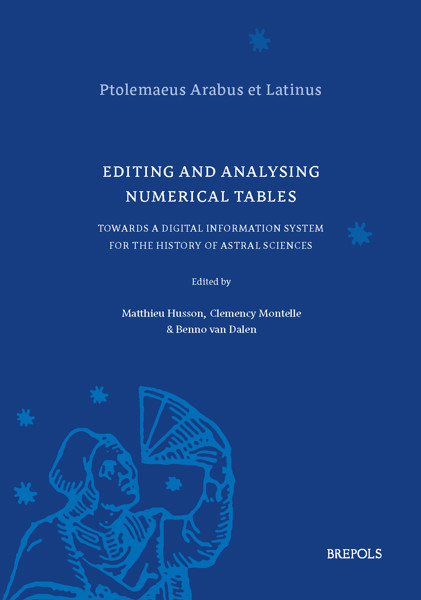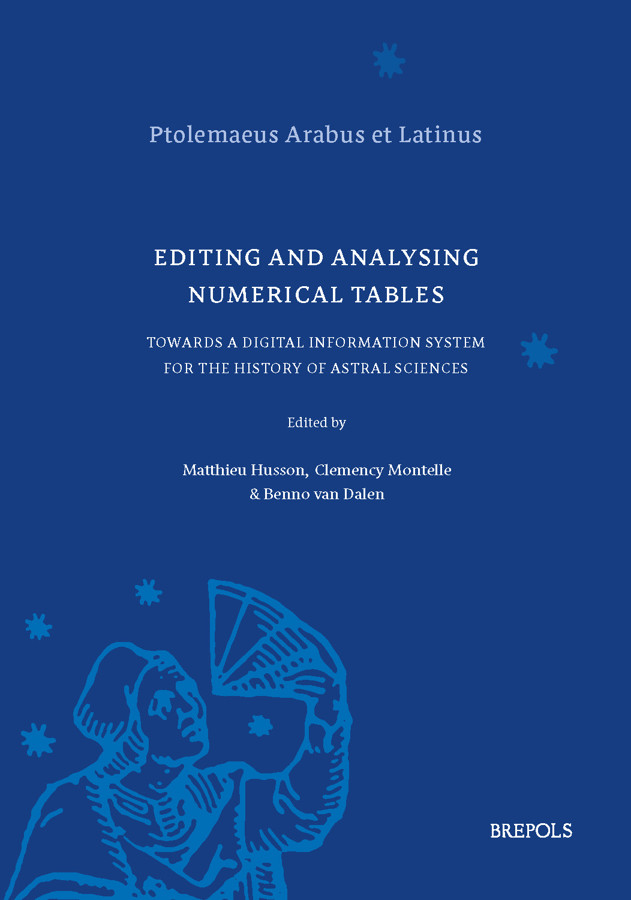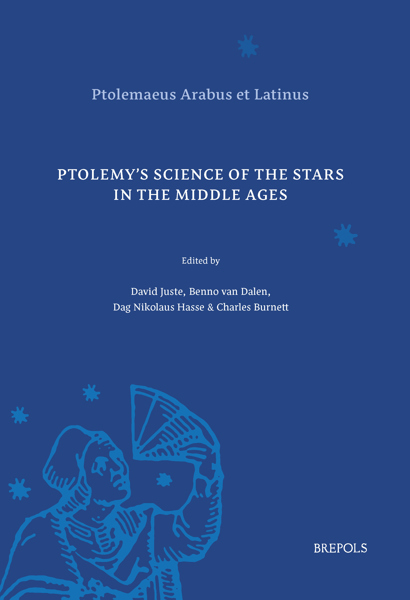
Editing and Analysing Numerical Tables
Towards a Digital Information System for the History of Astral Sciences
Matthieu Husson, Clemency Montelle, Benno van Dalen (eds)
- Pages: ix + 615 p.
- Size:178 x 254 mm
- Illustrations:58 b/w, 16 col.
- Language(s):English
- Publication Year:2022
- € 95,00 EXCL. VAT RETAIL PRICE
- ISBN: 978-2-503-59606-8
- Hardback
- Available
- ISBN: 978-2-503-59607-5
- E-book
- Available
The rapid growth of digital humanities and modern data analysis has prompted new approaches to the mathematical analysis and critical editing of astronomical tables. The numerical data conveyed in these tables provides rich evidence for pre-modern scientific practices.
“This volume makes a significant contribution to the study of astronomical tables and, given the role of tables in early astronomical practice, to the study of the history of astronomy itself. I particularly commend the editors for their intentional inclusion of discussion of methodological questions, which will be particularly useful in training future scholars. And with that in mind, the publication of the book as an open access e-book is particularly welcome.” (John Steele, in The Journal for the History of Astronomy, p. 244)
Matthieu Husson is a researcher in the history of late medieval astronomy in Europe and is the PI of the ERC project ALFA based at the Paris Observatory.
Clemency Montelle is a researcher in the history of mathematics and astronomy in India and is a professor in the School of Mathematics and Statistics at the University of Canterbury, Christchurch, New Zealand.
Benno van Dalen is a researcher in the history of Islamic astronomy and is one of the two research leaders of the project Ptolemaeus Arabus et Latinus at the Bayerische Akademie der Wissenschaften in Munich.
Astronomical tables are a significant yet understudied part of the scientific historical corpus. They circulated among many cultures, and were adopted and transformed by astronomical practitioners for a variety of purposes. The numerical data conveyed in these tables provides rich evidence for pre-modern scientific practices.
In the last fifty years, new approaches to the analysis and critical editing of astronomical tables have flourished due to advances in computing power and associated modern mathematical tools. In more recent times, the rapid growth of digital humanities and modern data analysis promises exciting further developments in this area. The present collection of studies on astronomical tables captures this momentum. It is a result of long-term collaborative work on building a database of astronomical tables and other objects found in manuscripts, released under the name DISHAS (Digital Information System for the History of Astral Sciences).
The fourteen contributions in this volume provide a broad coverage of astronomical traditions throughout Eurasia and North Africa, which, with very few exceptions, find their roots in the mathematical astronomy of Ptolemy. The contributions include critical editions of previously unexamined astronomical tables along with insightful mathematical analyses, as well as reflective methodological surveys that open up new perspectives for research on these fundamental sources for the history of mathematics and astronomy.
Matthieu Husson, Clememcy Montelle and Benno van Dalen
Introduction
Part 1 : Classical Approaches to Table Cracking
Glen Van Brummelen , Matthieu Husson, and Clemency Montelle
Tools of the Table Crackers: Using Quantitative Methods to Analyze Historical Numerical Tables
José Chabás and Bernard R. Goldstein
The Almanac of Jacob ben Makhir
Sebastian Falk
Copying and Computing Tables in Late Medieval Monasteries
Kailyn Pritchard
Determining the Sine Tables Underlying Early European Tangent Tables
Part 2 : Editing and Analysing Astronomical Tables
Clemency Montelle
Editing Sanskrit Astronomical Tables: The Candrārkī of Dinakara (1578 CE)
Anuj Misra
Recomputing Sanskrit Astronomical Tables: The Amṛtalaharī of Nityānanda (c. 1649/50 CE)
Part 3: Computational Practices and Table Cracking
Li Liang
Tables of Sunrise and Sunset in Yuan and Ming China (1271–1644) and their Adoption in Korea
Glen Van Brummelen
The Tables of Planetary Latitudes in Jamshīd al-Kāshī’s Khāqānī Zīj
Sho Hirose
Equation Tables in the Dṛggaṇita of Parameśvara
Richard Kremer
Cracking the Tabulae permanentes of John of Murs and Firmin of Beauval with Exploratory Data Analysis
Part 4: Pushing Approaches to Table Analysis Further
Matthieu Husson
Computing with Manuscripts: Time between Mean and True Syzygies in John of Lignères’ Tabule magne
Johannes Thomann
Reverse Engineering Applied to Ephemerides: Analysis and Edition of the Arabic Ephemeris of 1326/27 CE (MS Cairo, Dār al-Kutub, mīqāt 817)
Benno van Dalen
The Geographical Table in the Shāmil Zīj: Tackling a 13th-Century Arabic Source with the Aid of a Computer Database


